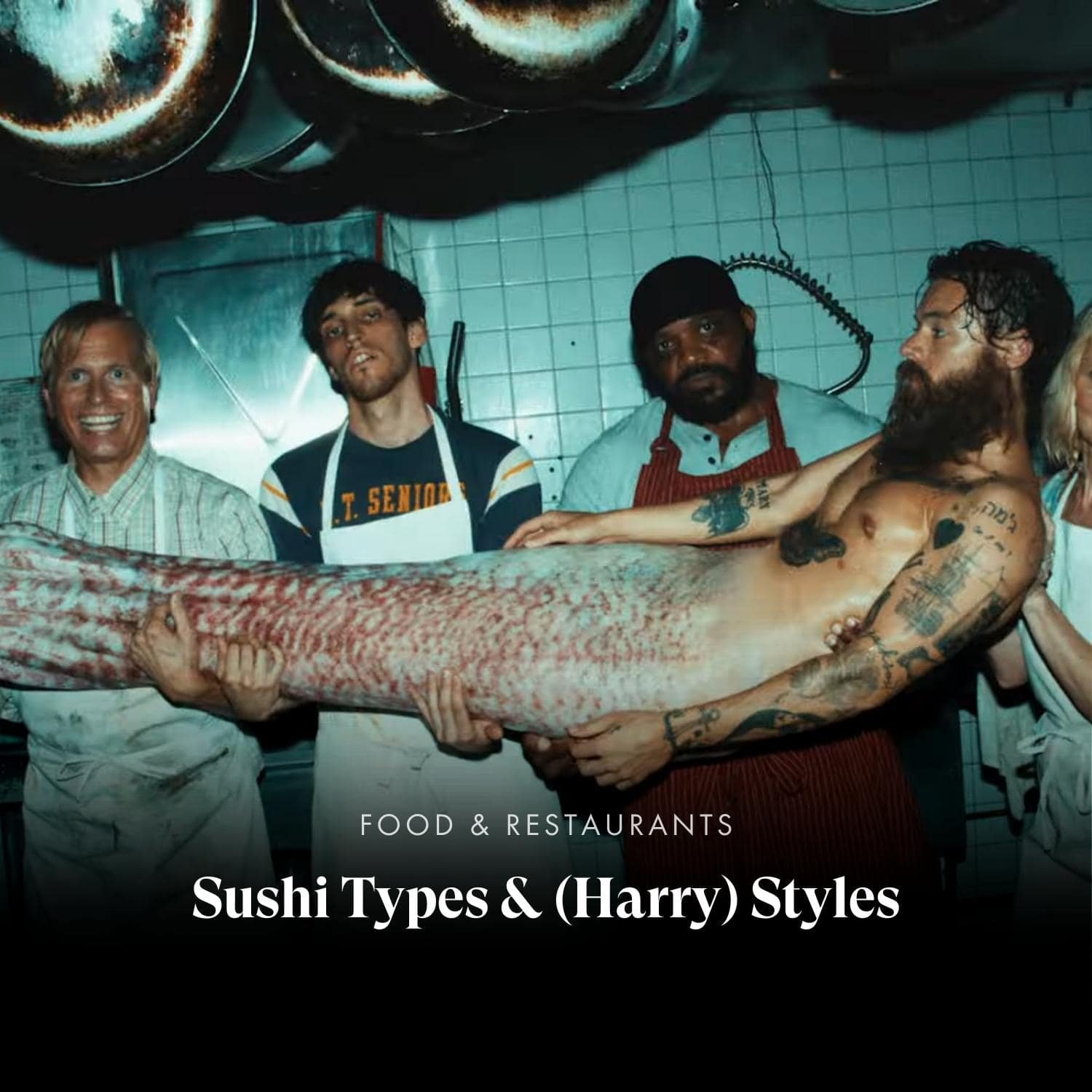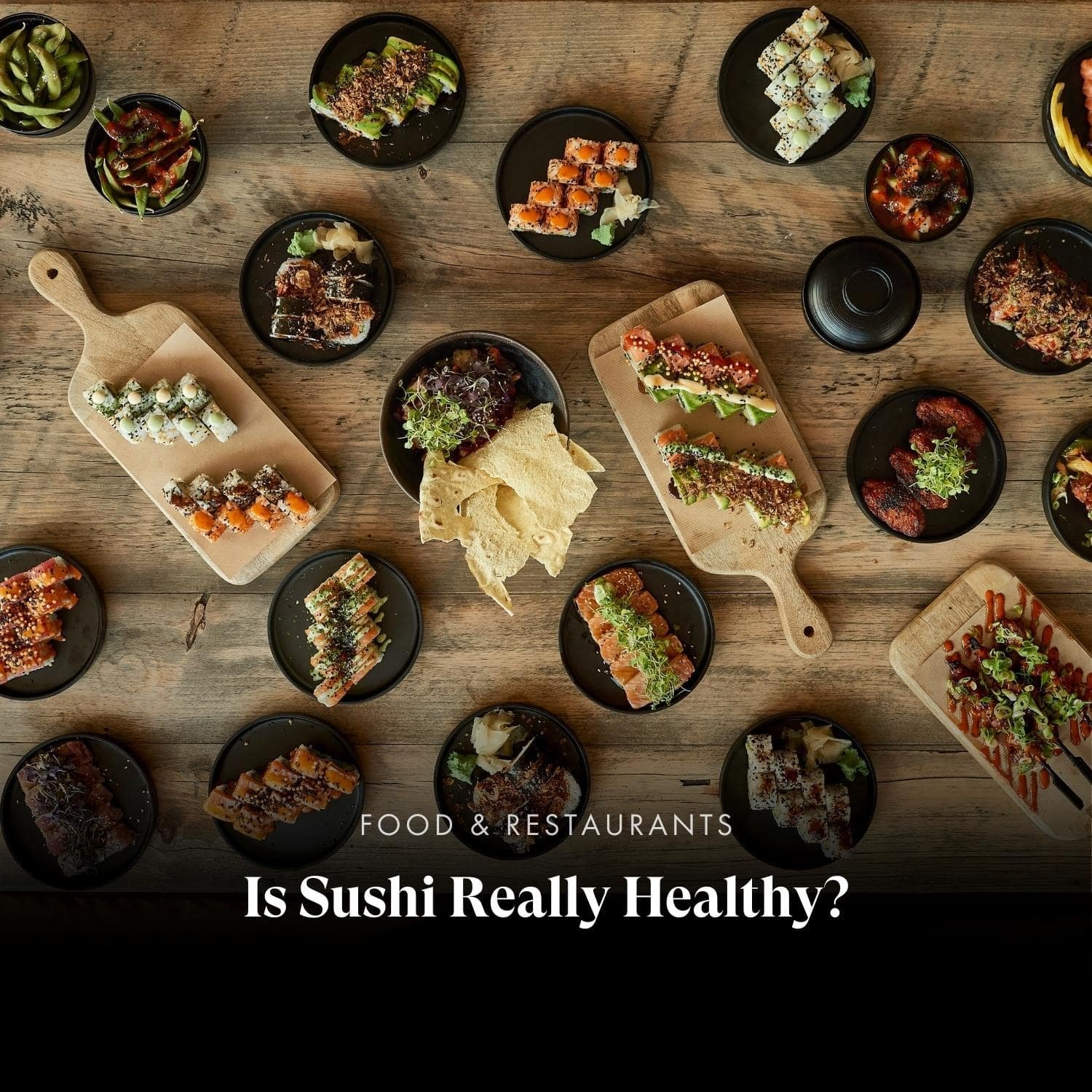From Nigiri to Maki: A Comprehensive Guide to Sushi Types
Sushi is one of the most popular Japanese foods across the globe, but with so many types (and styles) available it’s sometimes hard to know your Nigiri from your Maki. So we’ve put together a guide that will help deepen your understanding and open your eyes and your gills to new varieties of sushi.
We had lots of fun trying out different sushi cuisine when designing our Japanese restaurant menu. Settling on a menu that changes with the seasons, our standout favourites that currently feature on our menu are Sashimi and Maki (of which we have several varieties). So, grab your chopsticks and join us on a culinary exploration as we delve into the origins of each type, the ingredients used, and the proper way to eat them.
“Don’t dunk your nigiri in the soy sauce. Don’t mix your wasabi in the soy sauce. If the rice is good, complement your sushi chef on the rice. ”
From Nigiri to Maki: The different types of sushi
We’re guessing you’re reading this because you like sushi and know something about its origins and what it is, but just in case let’s start at the beginning, soy we’re all on the same page. OKAY we’re on a roll now, soy let’s talk sushi just for the halibut, salmon had to say it…
Anyway, back in the room…
Sushi is a traditional Japanese dish that typically consists of rice soaked in vinegar, known as "shari," mixed with other yummy ingredients like raw or cooked seafood, meats or veggies, and sometimes even tropical fruits. But what about all the different variations of this classic Japanese cuisine? Here is a non-exhaustive list of some of the most popular sushi dishes. I hope salmon here likes my sushi puns…
Nigiri Sushi
Nigiri sushi is made by laying a slice of raw fish on top of a small ball of sushi rice. Salmon, tuna or eel can be used for the fish in Nigiri sushi and much like many sushi the rice is seasoned with vinegar, sugar, and salt, which gives it a tangy flavour.
To make Nigiri you roll small balls of sushi rice in the palm of your hand, carefully placing the fish on top and pressing the fish and rice together to form a compact piece of sushi. Pair this with a small amount of wasabi and pickled ginger to cleanse the palate and you’ve got the perfect appetiser.
The ‘Maki platter’ at our sushi restaurant
Maki Sushi
Maki sushi, also known as ‘sushi rolls’, is made by wrapping sushi rice and various delicious fillings in sheets of dried seaweed called nori. Maki sushi can be filled with anything from raw fish to vegetables to cooked meats (see our Netil360 rooftop restaurant menu for our ‘Maki platter’ for a mix of some of our yummiest fillings).
There are many different types of Maki sushi, including Futomaki, Hosomaki, and Uramaki. Futomaki is a thick sushi roll using a variety of vegetables and cooked meats. Hosomaki is a thinner sushi roll that is usually filled with just one ingredient, such as cucumber or tuna and Uramaki, the ‘inside-out sushi’ roll has rice on the outside and the nori on the inside.
How to make Maki sushi
But how do you make Maki sushi? First, lay a sheet of nori on a bamboo mat, then spread a layer of sushi rice on top of the nori, leaving a gap at the top of the sheet. Then add the desired fillings in a line across the centre of the rice. Roll the sushi tightly, using the bamboo mat to shape it into a compact cylinder. Slice into bite-sized pieces and serve with soy sauce and wasabi.
Temaki sushi - the "hand roll" sushi
Temaki sushi, also known as hand rolls, is a type of sushi that is made by wrapping sushi rice and various fillings in a cone-shaped piece of nori. Temaki sushi is often filled with raw fish, avocado, and cucumber.
How to Temaki sushi
To make Temaki sushi, first lay a small piece of nori in your palm. Add a small amount of sushi rice to the nori, followed by the desired fillings. Then roll the nori into a cone shape, using your fingers to shape the sushi into a compact cylinder.
Temaki are super simple to make and require no fancy equipment, so you could even host your own ‘make your own sushi party’ with these ones.
Uramaki sushi - the "inside-out" sushi roll
Uramaki sushi, probably the sushi that is most recognisable, certainly in the U.K. is also known as ‘inside-out sushi’ rolls. It has the rice on the outside and the nori on the inside. Uramaki sushi, like our yummy Netil360 Uramaki, is usually filled with raw fish, avocado, and cucumber making for a delicious combination of textures and flavours.
How to make Uramaki sushi
To make Uramaki sushi, first lay a sheet of nori on a bamboo mat and then spread a layer of sushi rice on top, leaving a small gap at the top of the sheet. Next, flip the nori over (easier said that done!) so that the rice is on the bottom and the nori is on the top. Then, add the filling across the middle of the nori, and roll the sushi tightly, using the bamboo mat to shape it into a compact roll. Finally, carefully slice into bite-sized pieces and serve with soy sauce and wasabi, mmmm delicious! This is just how we like to roll…
Uramaki sushi from Netil360 rooftop sushi restaurant
Sashimi - raw fish without rice
Sashimi is thin slices of raw fish that are served without rice. Simple. Delicious. Fresh.
Sashimi, is all about sourcing the finest, best quality fresh fish and slicing into thin, bite-sized pieces with a sharp kitchen knife. Fresh, good quality fish is essential here for optimal taste and texture.
Sashimi rolling, they hating…
Salmon and tuna sashimi (fresh sliced fish) at our rooftop sushi restaurant
Harry Styles sushi
A human-squid hybrid that has human form on top and squid tentacles on the bottom, a mer-squid if you will that has gained global popularity over the years. A recent addition to the sushi family, Styles has poppy textures with undertones of disco and rock and will be sure to take centre stage on any well-respected sushi menu.
Styles sushi is often matched with a side of tongue and cheek or watermelon sugar, and always served with a healthy dose of talent which sees it becoming increasingly popular, even amongst the more cynical and purist sushi lovers.
Other types of sushi - inari, chirashi, and more
So, if your mouth isn’t already watering enough, here are a few more types of sushi to chose from. Inari sushi consists of sushi rice stuffed inside a sweetened tofu pouch. We don’t serve this (yet!) at Netil360 rooftop, but here’s a recipe in case you want to try it at home!
Or how about Chirashi sushi, a type of sushi that consists of sushi rice topped with various raw fish and vegetables. Or Narezushi, a type of fermented sushi that is often served in the Kyoto region of Japan and don’t forget about Oshizushi made by pressing sushi rice and various fillings into a rectangular box. Yum!
Sushi etiquette - what to do and what to avoid
Sushi etiquette is an important part of the Japanese culture. Below are some things to keep in mind when dining on sushi. Worth noting however, that up here at our rooftop Japanese restaurant things are pretty chill, so most of the following can be noted for your next trip to Japan, rather than your next visit to our rooftop in East London.
Do sit at the sushi bar if possible, as this allows you to interact with the sushi chef and watch them prepare your sushi.
Don't ask for extra wasabi or soy sauce, as this can be seen as an insult to the chef (here at our sushi restaurant in Hackney we always have soy sauce on the table, so you can get as saucy as you wish).
Do try new types of sushi, even if you're not familiar with them (hopefully you’re more familiar now!).
Don't mix different types of sushi on your plate.
Do use the provided chopsticks or ask for a fork if you're not comfortable using chopsticks.
As a general rule, don't talk with your mouth full or make loud noises while eating. But it depends your company, as the popularity of sushi ASMR videos suggests many people would love to hear you eat, which can be seen below from our friend Zach Choi in Japan:
-
The three main types of sushi are nigiri, maki, and sashimi. As you can read above, Nigiri is a hand-formed sushi that consists of a small ball of rice topped with a slice of raw fish. Also described above, Maki is a rolled sushi that typically contains rice, seaweed, and different fillings. Sashimi is one of the simplest types of sushi - Thinly sliced raw fish served without rice, but often served with garnish such as wasabi in Japanese restaurants.
Did you hear the buzzing noise?… It was-a-bi.OK that’s the last one - promise!
-
A survey conducted by the Japan Sushi Association suggested the most popular types of sushi are tuna, salmon, and prawn. Other popular types include, among others: California rolls, eel, and yellowtail.
-
As noted int his article, the two main types of sushi are nigiri and maki.
-
Item description
-
Whilst these aren’t rules at Netil360, we do consider the following good etiquette:
Do use your chopsticks or your fingers to pick up the sushi.
Don't mix wasabi with soy sauce (listen to Anthony Bourdain). Instead, dip the sushi into the soy sauce and then add a small amount of wasabi on top of the fish.
Do eat the sushi in one bite if possible.
Don't rub your chopsticks together, as this is considered rude.
Do use the pickled ginger to cleanse your palate between bites.
Don't eat too much soy sauce or wasabi, as this can overpower the flavour of the sushi.
-
Mukbang or meokbang is essential a video or show that viewers have the (questionable) pleasure of s watching people eat. The host consumes various quantities of food, typically with enhanced audio of the sounds of the the host eating. It’s one of the more popular forms of ASMR (Autonomous Sensory Meridian Response) videos. The word mukbang comes from the Korean words muk-ja for ‘eating’ and bang-song for ‘broadcast.’ So as a direct translation, mukbang means ‘eating broadcast’.ASMR
It’s always sushi time at Netil360 rooftop restaurant (well, actually - Wednesday to Sunday: Midday - 10pm) but our sushi love is full time.








